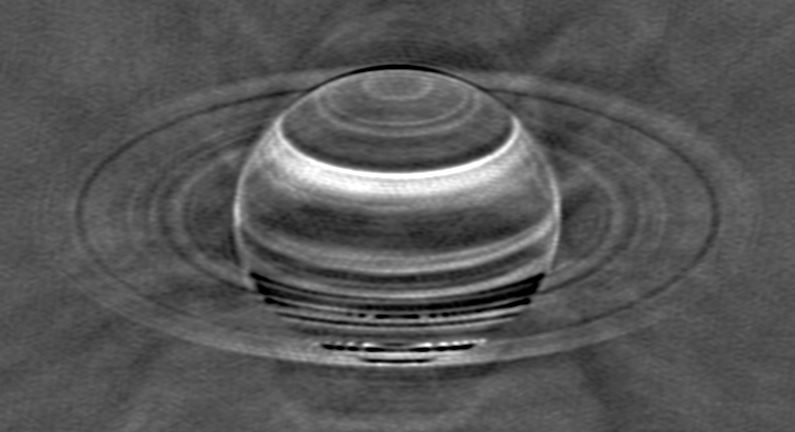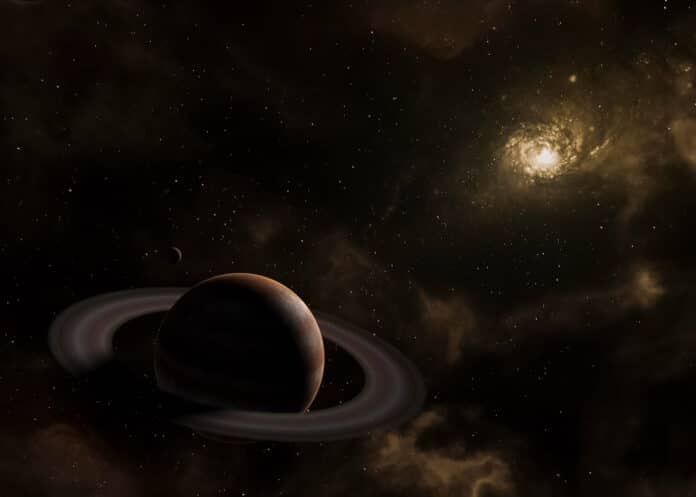Planetary-scale giant storms erupt on Saturn quasiperiodically. There have been at least six recorded occurrences of past eruptions.
According to a recent study, Saturn also possesses long-lasting mega storms with impacts deep in the atmosphere that continue for millennia, despite being considerably duller and less colorful than Jupiter.
Astronomers from the Universities of California, Berkeley, and Michigan, Ann Arbor, examined the planet’s radio emissions, which originate below the surface, and discovered long-term abnormalities in the ammonia gas distribution.
Megastorms, akin to hurricanes on Earth but far larger, happen on Saturn every 20 to 30 years. The reason for mega-storms in Saturn’s atmosphere, primarily made of hydrogen and helium with traces of methane, water, and ammonia, remains unknown, in contrast to the factors that lead to hurricanes on Earth.
Lead author Cheng Li, a former 51 Peg b Fellow at UC Berkeley who is now an assistant professor at the University of Michigan, said, “Understanding the mechanisms of the largest storms in the solar system puts the theory of hurricanes into a broader cosmic context, challenging our current knowledge and pushing the boundaries of terrestrial meteorology.”
Imke de Pater, a UC Berkeley professor emerita of astronomy and Earth and planetary sciences, said, “At radio wavelengths, we probe below the visible cloud layers on giant planets. Since chemical reactions and dynamics will alter the composition of a planet’s atmosphere, observations below these cloud layers are required to constrain the planet’s true atmospheric composition, a key parameter for planet formation models. Radio observations help characterize dynamical, physical and chemical processes including heat transport, cloud formation and convection in the atmospheres of giant planets on both global and local scales.”

In this study, scientists found something surprising in the radio emissions from the planet. Anomalies in the atmosphere’s ammonia gas concentration, which they linked to the occurrence of massive storms in the planet’s northern hemisphere in the past.
The study claims that ammonia concentrations are lower at midlatitudes, just below the top ammonia-ice cloud layer, but have increased at lower altitudes, 100 to 200 kilometers deeper in the sky. They postulate that the mechanisms of precipitation and evaporation are how ammonia is transferred from the higher to the lower atmosphere. Additionally, that impact may endure for hundreds of years.
The study also showed that Saturn and Jupiter are very different from one another, despite the fact that both gas giants are composed of hydrogen. Although there are tropospheric anomalies on Jupiter, they have been linked to the planet’s zones and belts and are not brought on by storms like they are on Saturn. The vast differences between these nearby gas giants are upending current theories about how mega storms develop on gas giants and other worlds and could impact how they are discovered and investigated on exoplanets in the future.
Journal Reference:
- Cheng Li, Imke De Pater, Chris Moeckel et al. Long-lasting, deep effect of Saturn’s giant storms. Science Advances. DOI: 10.1126/sciadv.adg9419
